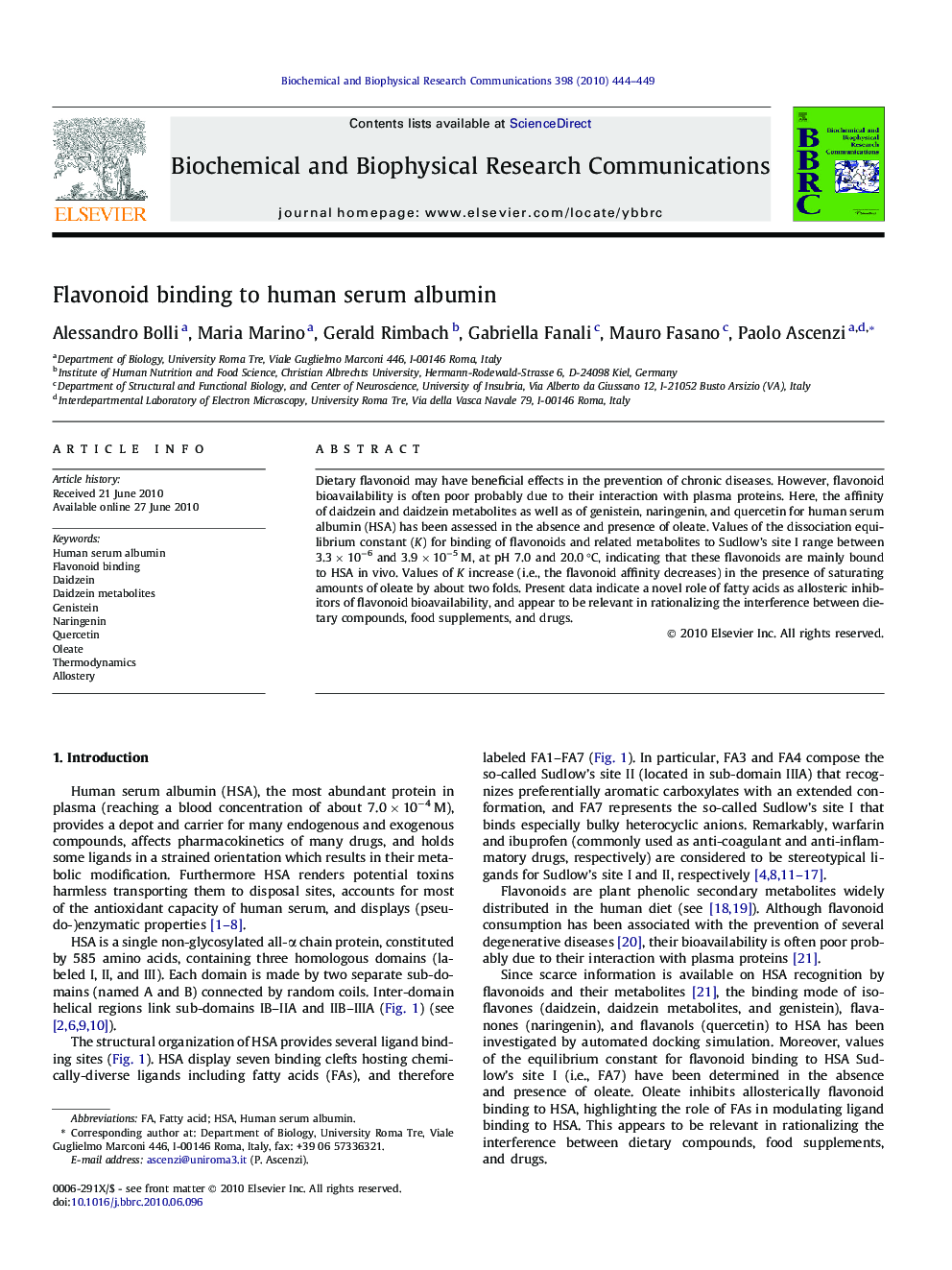| Article ID | Journal | Published Year | Pages | File Type |
|---|---|---|---|---|
| 1931562 | Biochemical and Biophysical Research Communications | 2010 | 6 Pages |
Dietary flavonoid may have beneficial effects in the prevention of chronic diseases. However, flavonoid bioavailability is often poor probably due to their interaction with plasma proteins. Here, the affinity of daidzein and daidzein metabolites as well as of genistein, naringenin, and quercetin for human serum albumin (HSA) has been assessed in the absence and presence of oleate. Values of the dissociation equilibrium constant (K) for binding of flavonoids and related metabolites to Sudlow’s site I range between 3.3 × 10−6 and 3.9 × 10−5 M, at pH 7.0 and 20.0 °C, indicating that these flavonoids are mainly bound to HSA in vivo. Values of K increase (i.e., the flavonoid affinity decreases) in the presence of saturating amounts of oleate by about two folds. Present data indicate a novel role of fatty acids as allosteric inhibitors of flavonoid bioavailability, and appear to be relevant in rationalizing the interference between dietary compounds, food supplements, and drugs.
Research highlights►Flavonoid binding to HSA has been investigated by automated docking simulation. ►Flavonoid affinity for HSA has been assessed in the absence and presence of oleate. ►The affinity of flavonoids for HSA decreases in the presence of oleate. ►Oleate acts as an allosteric inhibitor of flavonoid bioavailability. ►The interference between dietary compounds, food supplements, and drugs occurs.
